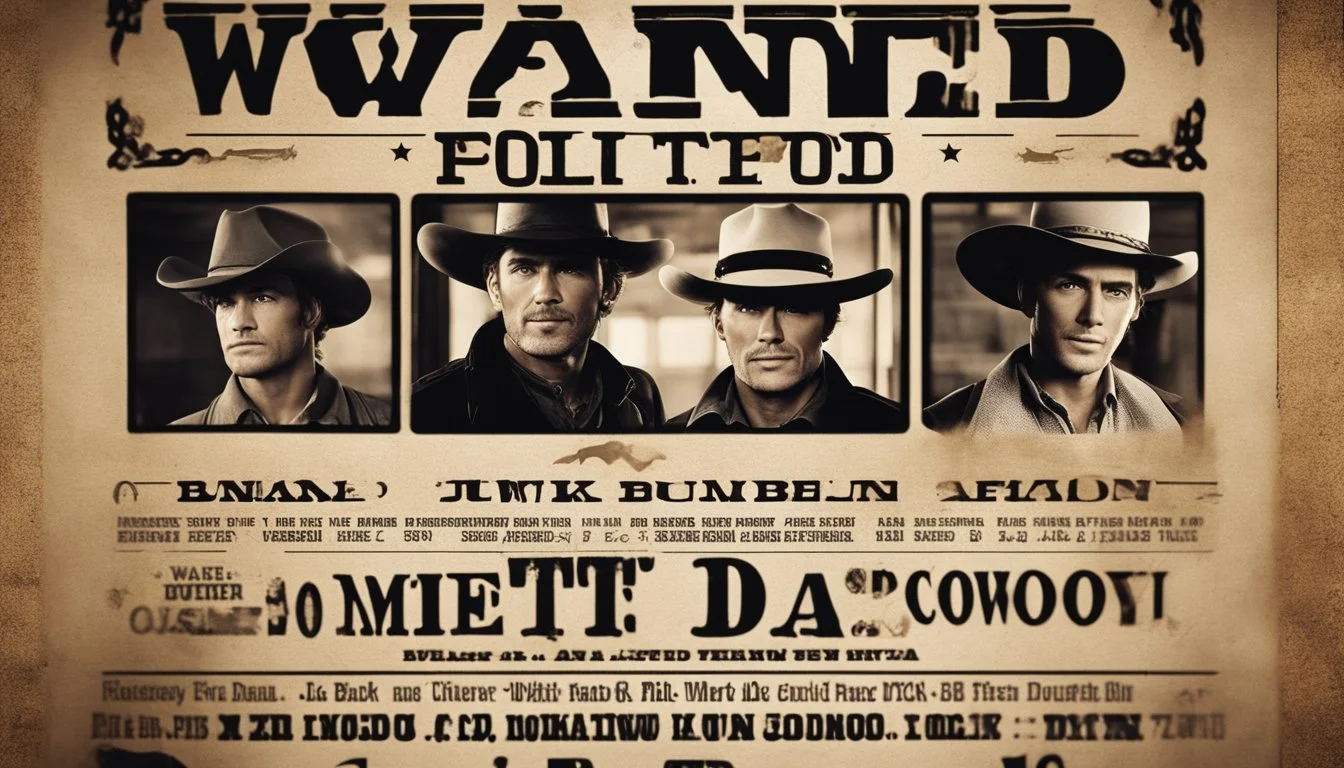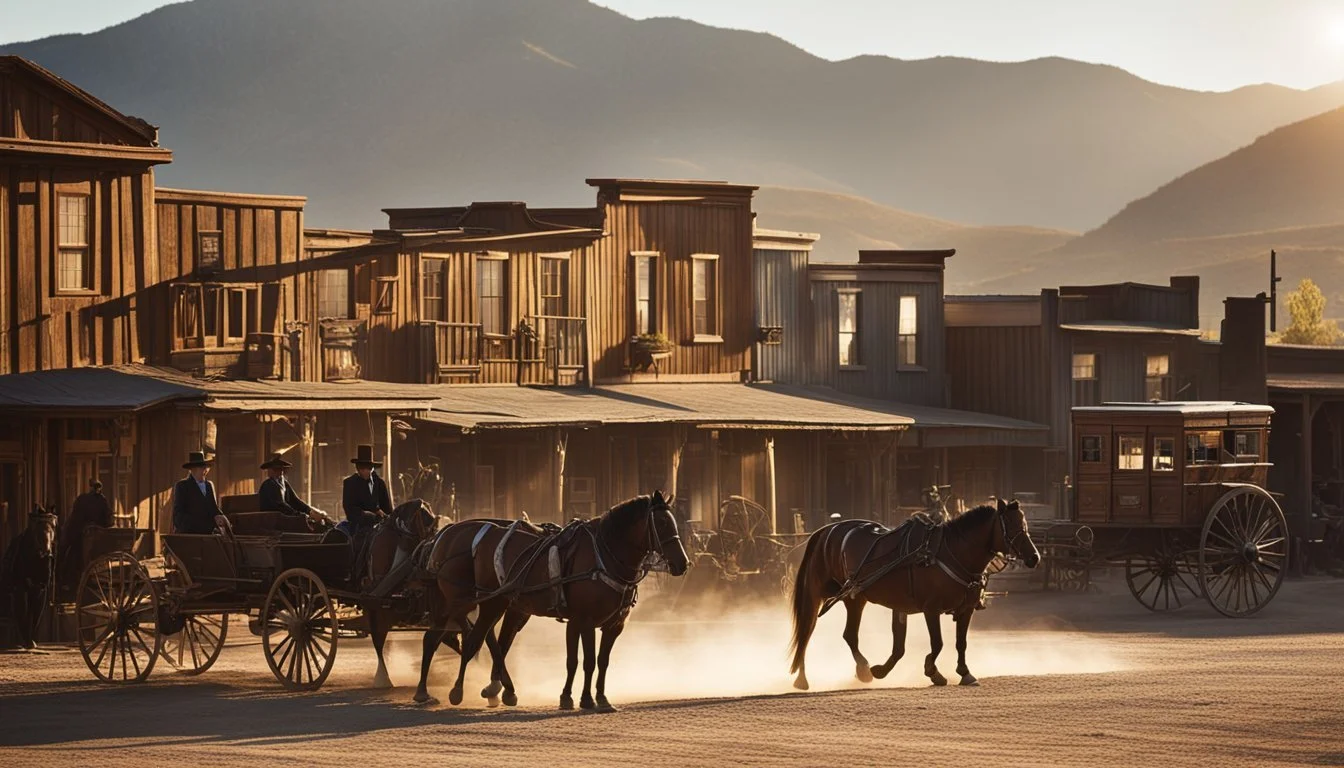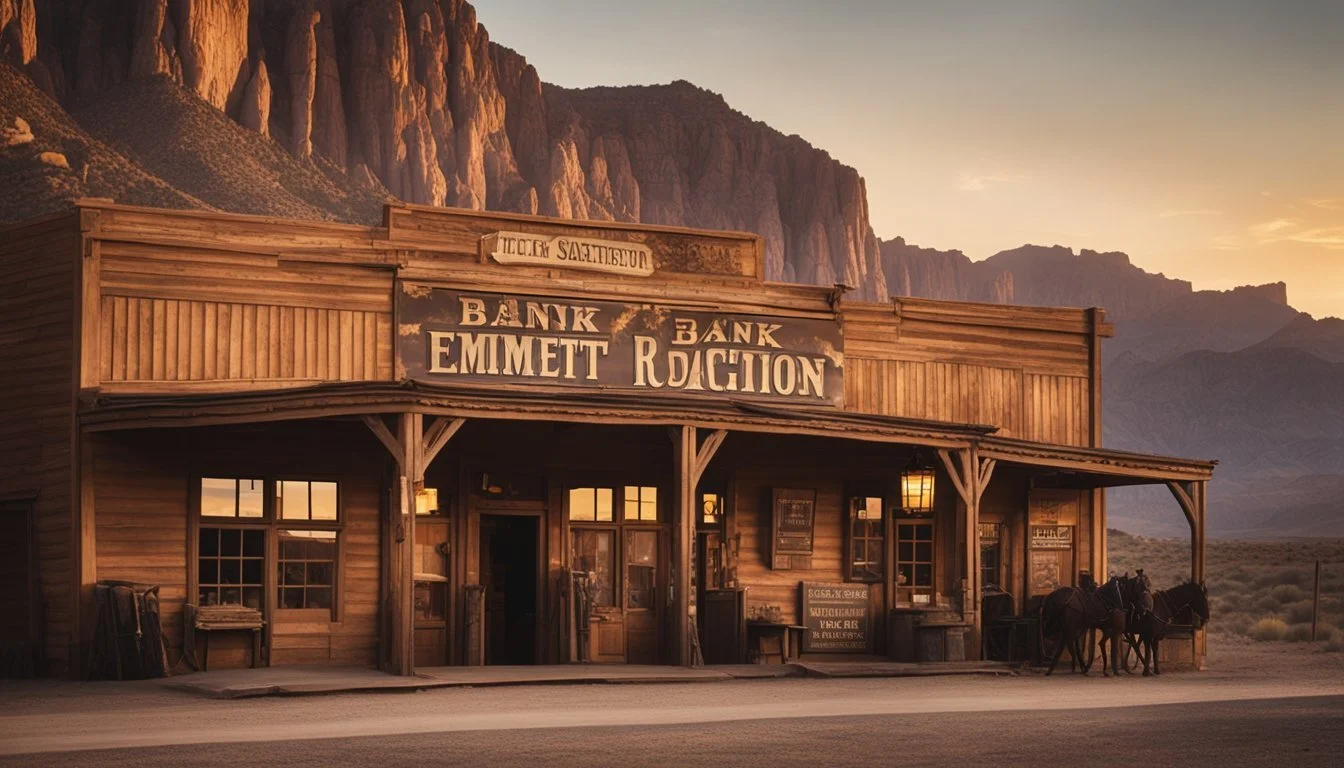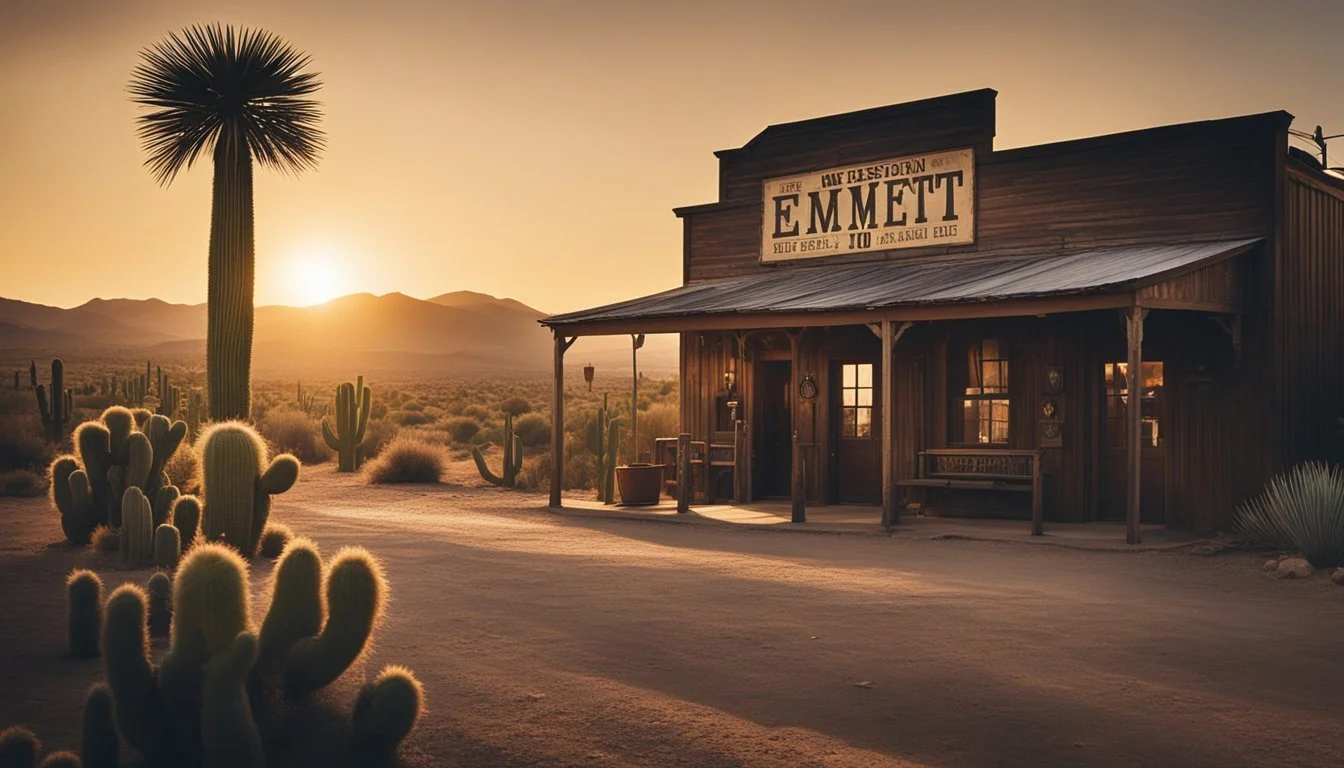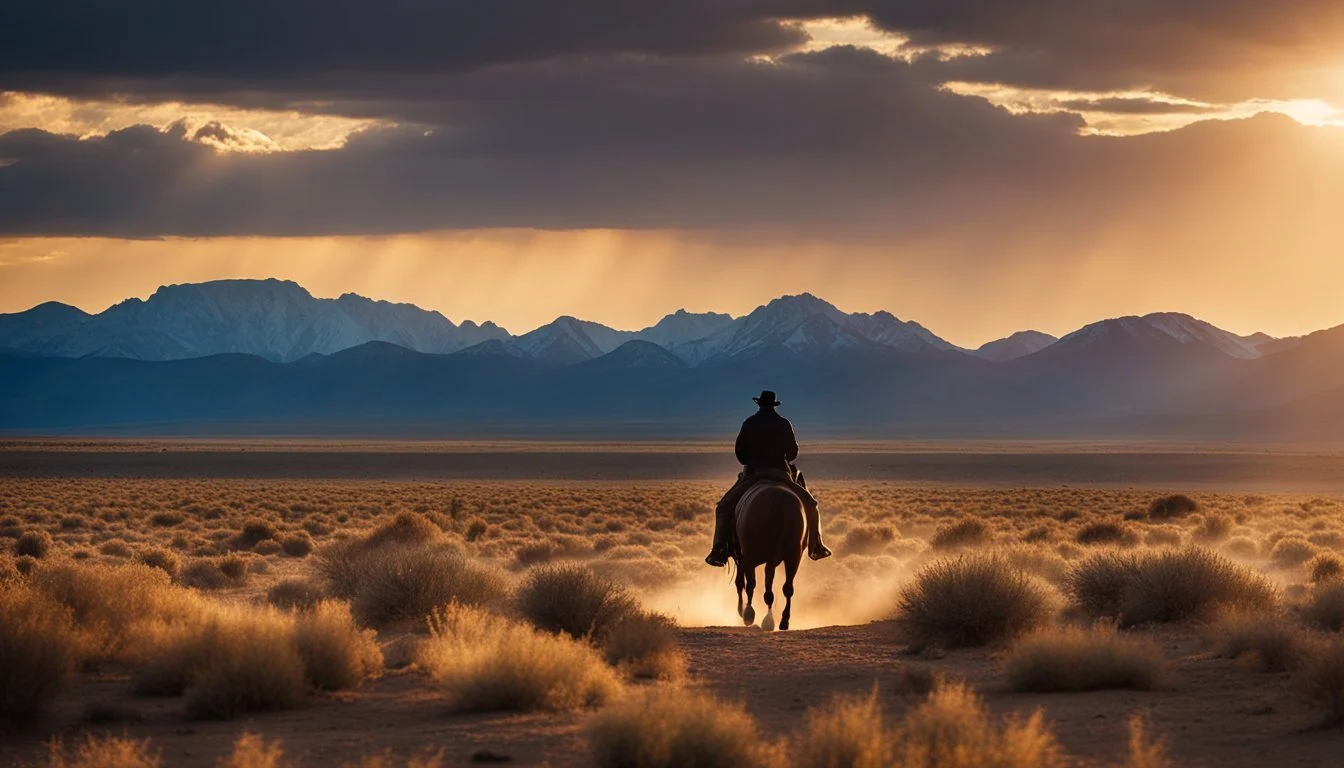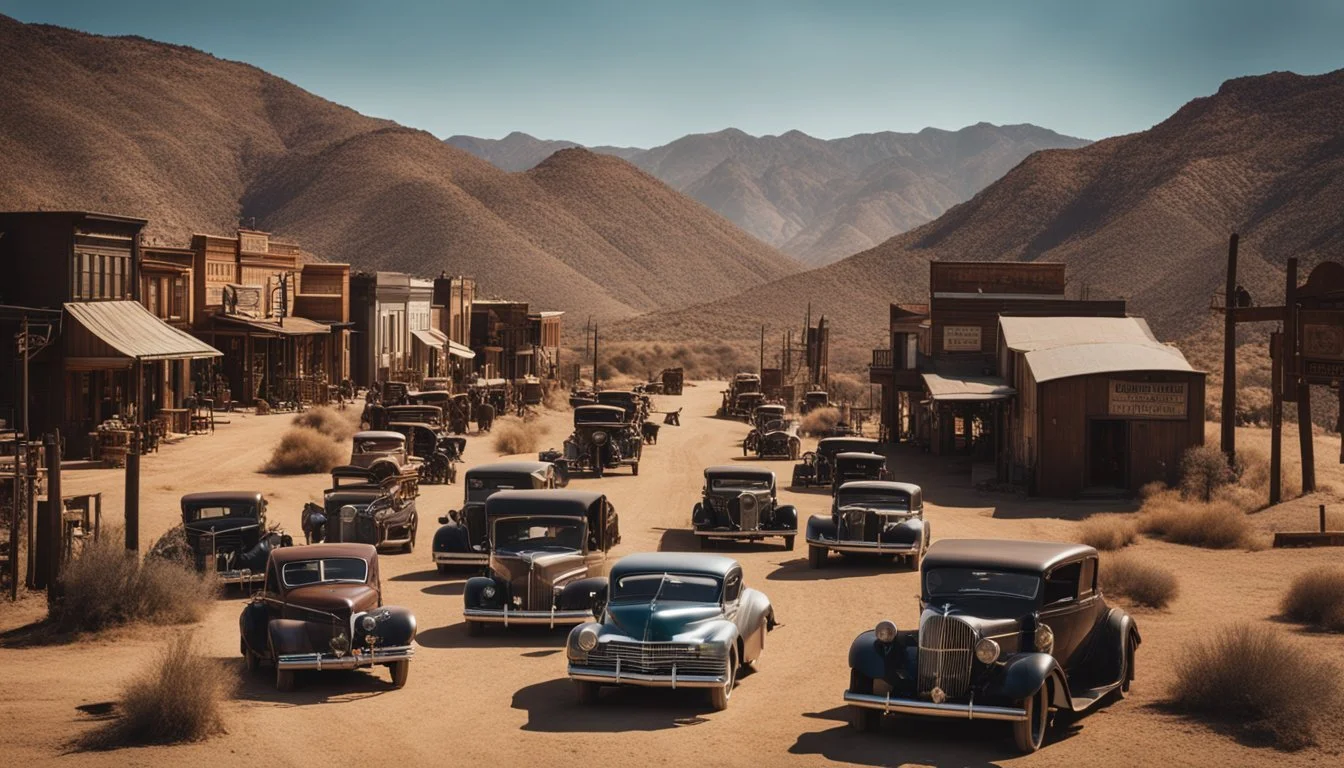5 Emmett Dalton Documentaries: From Outlaw to Hollywood
A Journey Through Time
Emmett Dalton's life journey from notorious outlaw to Hollywood actor captivates audiences to this day. His transformation from a member of the infamous Dalton Gang to a respected figure in the film industry offers a unique perspective on the American Old West and early cinema.
Documentaries about Emmett Dalton provide viewers with insight into his remarkable life story and the historical context of his era. These films explore his criminal past, his miraculous survival of the Coffeyville raid, and his later pursuits in writing and filmmaking. By examining Dalton's life through various documentary lenses, audiences gain a deeper understanding of this complex historical figure.
1) The Last Outlaw: Emmett Dalton's Tale (1989)
"The Last Outlaw" chronicles the life of Emmett Dalton, the youngest member of the infamous Dalton Gang. This documentary explores Emmett's transformation from a notorious outlaw to a reformed citizen.
The film details the Dalton Gang's daring exploits, including train robberies and bank heists. It focuses on the fateful day of October 5, 1892, when the gang attempted to rob two banks simultaneously in Coffeyville, Kansas.
Emmett miraculously survived the shootout despite receiving 23 gunshot wounds. The documentary recounts his 14-year imprisonment and subsequent pardon, which marked the beginning of his new life.
After his release, Emmett moved to California and became involved in the film industry. He used his experiences to consult on Western movies and even appeared in some productions.
The documentary provides insight into Emmett's efforts to rehabilitate his image and make amends for his past. It showcases his later years as an author and lecturer, sharing cautionary tales about the consequences of a life of crime.
Learn more about Emmett Dalton on Wikipedia
2) Emmett Dalton and the Wild Bunch Chronicles
"The Wild Bunch Chronicles" (2005) explores Emmett Dalton's connections to other notorious outlaws of the American West. This documentary examines Dalton's interactions with members of the Wild Bunch gang, including Butch Cassidy and the Sundance Kid.
The film delves into Dalton's time in prison and his subsequent encounters with former outlaws who had gone straight. It highlights how Dalton's experiences intersected with those of other famous Western figures.
Interviews with historians and archival footage provide context for Dalton's place in the larger tapestry of Wild West outlaws. The documentary also touches on Dalton's later career in Hollywood and how he helped shape the public's perception of the Old West.
"The Wild Bunch Chronicles" offers a unique perspective on Emmett Dalton's life, focusing on his connections to other legendary figures of the era. It presents a balanced view of Dalton's complex legacy as both an outlaw and a storyteller.
More information on "The Wild Bunch" gang
3) Outlaw Turned Actor: The Emmett Dalton Story
Emmett Dalton's journey from outlaw to Hollywood actor is a fascinating tale of redemption. Born in 1871, Dalton was the youngest member of the infamous Dalton Gang, known for their daring train and bank robberies in the American Midwest.
In 1892, Dalton survived a failed bank robbery attempt in Coffeyville, Kansas, sustaining 23 gunshot wounds. He served 14 years in prison for his crimes before being pardoned in 1907.
After his release, Dalton embraced a new life path. He moved to California and began working in the burgeoning film industry. His unique background as a former outlaw made him an intriguing figure in Hollywood.
Dalton appeared in several Western films, capitalizing on his real-life experiences. He also worked as a screenwriter and technical advisor, lending authenticity to depictions of outlaw life on screen.
His most notable film appearance was in the 1918 movie "Beyond the Law," where he played himself. This silent Western dramatized the Dalton Gang's exploits and Emmett's eventual reformation.
Dalton's transformation from outlaw to actor exemplifies the American ideal of second chances and reinvention. His story continues to captivate audiences, blending the mythology of the Old West with the allure of early Hollywood.
4) From Bandit to Big Screen: Emmett Dalton
Emmett Dalton's life took an unexpected turn after his outlaw days. Following his release from prison in 1907, he ventured into the entertainment industry.
Dalton capitalized on his notorious past by writing books about his experiences. His memoir, "Beyond the Law," was published in 1918 and became a bestseller.
In 1918, Dalton starred as himself in the silent film "Beyond the Law." This marked his debut in Hollywood, where he portrayed his own criminal exploits on screen.
Dalton continued his film career with appearances in several westerns. He acted in "The Man of the Desert" (1919) and "The Spirit of the USA" (1924).
His most notable film role came in "When the Daltons Rode" (1940). Though not acting in it, Dalton served as a technical advisor, ensuring the accuracy of the Dalton Gang's portrayal.
Emmett Dalton's transformation from outlaw to author and actor showcased his ability to reinvent himself. His experiences in the Old West provided a unique perspective that audiences found captivating.
5) Unmasking Emmett Dalton: Hero or Villain?
This thought-provoking documentary examines the complex legacy of Emmett Dalton, challenging viewers to consider whether he was a hero or villain. The film explores Dalton's transformation from outlaw to Hollywood actor.
Interviews with historians and descendants provide varied perspectives on Dalton's character. The documentary delves into his involvement in the infamous Coffeyville raid and his subsequent prison sentence.
Archival footage and reenactments bring Dalton's story to life, showcasing his early days as a gang member and his later career in the film industry. The film also addresses Dalton's efforts to reform and his contributions to society after his release from prison.
Experts debate whether Dalton's eventual change of heart redeems his criminal past. The documentary presents evidence of both his misdeeds and his attempts at redemption, allowing viewers to form their own opinions.
By examining Dalton's life from multiple angles, this film offers a nuanced portrayal of a controversial figure in American history. It challenges simplistic notions of good and evil, presenting Dalton as a complex individual shaped by his experiences.
Learn more about Emmett Dalton on Wikipedia
The Early Life of Emmett Dalton
Emmett Dalton's early years were shaped by his family background and initial brushes with the law. Born in 1871, he grew up in a large family that eventually became infamous for their outlaw activities.
Family Background
Emmett Dalton was born on May 3, 1871, in Missouri. He was the youngest member of a large family that included several brothers who would later gain notoriety. In 1882, the Dalton family moved to Indian Territory, now part of Oklahoma.
This relocation played a significant role in shaping Emmett's future. The family faced financial struggles, which may have contributed to their later turn to crime.
Tragedy struck the Daltons in 1887 when Emmett's eldest brother, Frank, a U.S. marshal, was killed in the line of duty. This event deeply affected the family and possibly influenced their future actions.
First Encounters with the Law
Emmett's early encounters with the law were likely influenced by his older brothers' activities. As a teenager, he witnessed his siblings' gradual shift from law enforcement to outlawry.
His brothers Grattan (Grat) and Robert (Bob) began their criminal careers in the late 1880s. Emmett, being the youngest, was drawn into their illegal activities.
By his late teens, Emmett had joined his brothers in various criminal enterprises. These early experiences set the stage for his participation in the infamous Coffeyville raid of 1892, which would dramatically alter the course of his life.
Criminal Career and the Dalton Gang
Emmett Dalton's life of crime began in the early 1890s as part of the notorious Dalton Gang. The group gained infamy for their daring train and bank robberies across the American Midwest, culminating in a disastrous raid in Coffeyville, Kansas.
Formation of the Dalton Gang
The Dalton Gang emerged in 1890, led by Bob Dalton and his brothers Grat and Emmett. Ironically, the brothers had previously served as lawmen. Bob and Grat worked as U.S. Deputy Marshals in Indian Territory, but accusations of corruption led to their dismissal.
Seeking quick wealth, they turned to crime. The gang recruited additional members, including Bill Power and Dick Broadwell. Their intimate knowledge of law enforcement tactics gave them an edge in planning heists.
Emmett, the youngest at 21, initially hesitated to join his brothers' criminal enterprise. However, family loyalty and the allure of easy money eventually swayed him.
Famous Heists and Robberies
The Dalton Gang quickly gained notoriety for their brazen robberies. They primarily targeted trains and banks across Oklahoma, Kansas, and Indian Territory.
One of their most successful heists occurred in Alila, California, in February 1891. The gang robbed a Southern Pacific train, making off with thousands of dollars. This bold act put them squarely in the crosshairs of law enforcement.
Another notable robbery took place in Red Rock, Oklahoma Territory. The gang held up a Santa Fe train, escaping with a substantial haul. Their tactics often involved quick strikes and rapid getaways, leveraging their knowledge of the terrain.
The gang's success emboldened them, leading to increasingly risky ventures.
The Infamous Coffeyville Raid
On October 5, 1892, the Dalton Gang attempted their most audacious heist yet - simultaneously robbing two banks in Coffeyville, Kansas. This raid would prove to be their undoing.
The gang split into two groups, with Emmett and Bob targeting the First National Bank. However, townspeople recognized the outlaws and quickly armed themselves.
A fierce gun battle erupted in the streets. In the chaos, four gang members were killed, including Bob and Grat Dalton. Emmett, despite sustaining 23 gunshot wounds, survived.
This disastrous raid marked the end of the Dalton Gang. Emmett was captured and sentenced to life in prison, bringing a dramatic close to his criminal career.
Life After Crime
Emmett Dalton's life took a dramatic turn after his criminal career ended. He served a lengthy prison sentence before being released and embarking on a new chapter as a reformed individual.
Imprisonment and Release
Emmett Dalton was sentenced to life in prison for his role in the failed Coffeyville bank robberies. He spent 14 years behind bars at the Kansas State Penitentiary. During his incarceration, Dalton showed signs of rehabilitation and good behavior.
In 1907, he received an unconditional pardon from the governor of Kansas. This marked the beginning of Dalton's journey to rebuild his life and reputation.
Rehabilitation and Public Speaking
Upon his release, Emmett Dalton committed himself to a law-abiding lifestyle. He moved to California and became an advocate for prison reform. Dalton used his experiences to educate the public about the consequences of crime.
He wrote two books about his outlaw past: "When the Daltons Rode" and "Beyond the Law." These works provided insight into the Dalton Gang's activities and Emmett's perspective on his criminal life.
Dalton also found success in Hollywood, appearing in several Western films. He leveraged his notoriety to establish a career as an actor and consultant on Old West-themed productions.
Emmett Dalton in Hollywood
After his life of crime, Emmett Dalton found an unlikely second act in the entertainment industry. He leveraged his outlaw past to build a career in Hollywood as both an actor and consultant.
Transition to the Film Industry
Dalton moved to California in the 1920s and began working as a technical advisor on Western films. His firsthand knowledge of outlaws and gunfights made him a valuable asset to movie productions seeking authenticity.
In 1918, Dalton appeared as himself in the film "Beyond the Law." This marked his acting debut and kicked off his Hollywood career. He went on to play small roles in several other Westerns throughout the 1920s and early 1930s.
Dalton also wrote screenplays inspired by his outlaw days. His insider perspective on the Old West helped shape how it was portrayed on screen during this era.
Depictions in Cinema
Several films have dramatized Emmett Dalton's life story over the years. The 1940 movie "When the Daltons Rode" featured Broderick Crawford as Emmett.
More recently, the 2019 Netflix film "The Highwaymen" included a portrayal of Dalton as a minor character. These depictions tend to focus on his outlaw years rather than his later Hollywood career.
Dalton himself occasionally consulted on films about the Old West, lending an air of authenticity to productions. His unique journey from notorious criminal to film industry insider continues to fascinate audiences and filmmakers alike.
Legacy and Cultural Impact
Emmett Dalton's transformation from outlaw to Hollywood figure left an indelible mark on American popular culture. His story captivated audiences and inspired numerous works across various media.
Books and Biographies
Dalton's life became the subject of several books and biographies. He penned his own memoir, "Beyond the Law," published in 1918. This firsthand account provided readers with insights into his outlaw past and subsequent reformation. Other authors also chronicled Dalton's journey, including "When the Daltons Rode" by Emmett's wife, Julia Johnson Dalton.
These works helped cement Dalton's place in Western lore and contributed to the public's fascination with outlaw-turned-lawman narratives. The books often highlighted Dalton's redemption story, emphasizing his transformation from criminal to respected citizen.
Public Perception Over Time
Public perception of Emmett Dalton evolved significantly over the decades. Initially viewed as a notorious outlaw, Dalton's image shifted as he embraced a law-abiding life and entered the entertainment industry.
His appearances in films and public speaking engagements helped humanize him in the eyes of the public. Dalton's story became a testament to redemption and second chances. Over time, he transitioned from being seen as a dangerous criminal to a colorful character of the Old West.
This change in perception influenced how outlaws were portrayed in popular media, contributing to the romanticized image of Western outlaws in American culture. Dalton's legacy continues to intrigue history enthusiasts and Western aficionados today.

